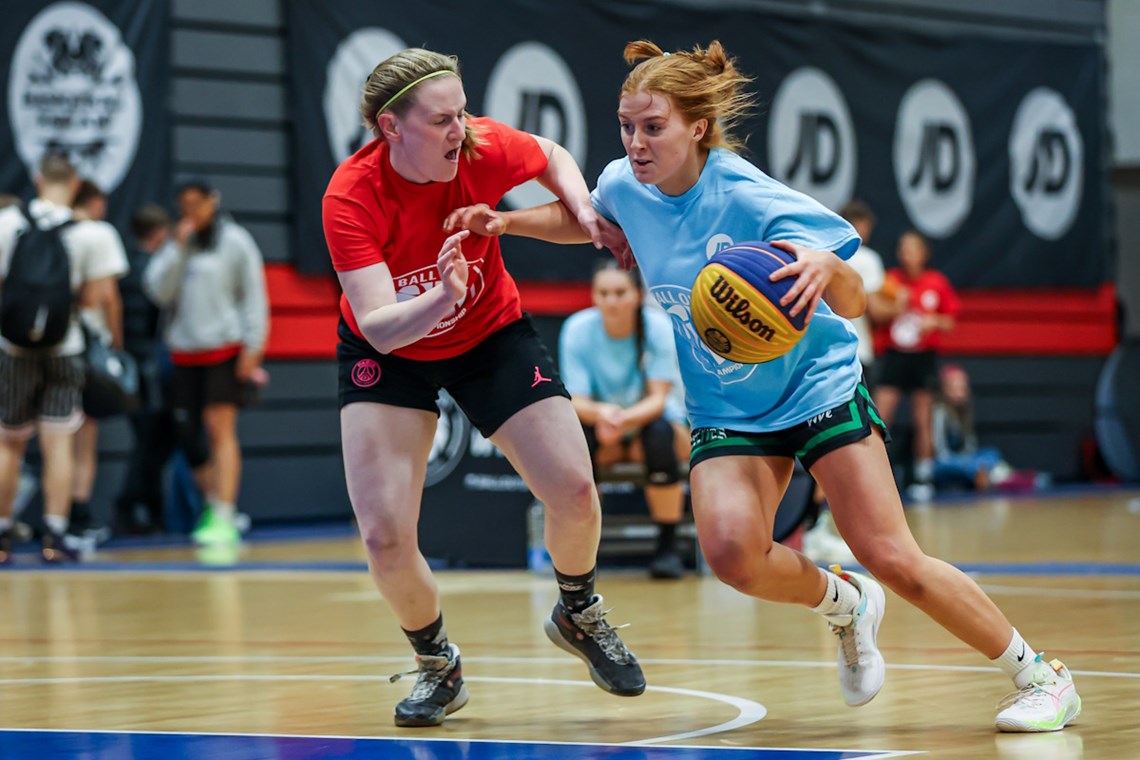
The latest surveys, which track people’s engagement with sport and physical activity, show that nearly 1.2 million children and young people (aged 5-16) play basketball on a weekly basis and nearly 350,000 adults (16+) participate in the sport twice a month, making a total of 1.55 million.
It also means, basketball is England's second most popular team sport, after football.

In the Active Lives Children and Young People survey for Academic Year 2022-23, over 20,000 more under-16s are playing basketball on a weekly basis – up from 1,178,300 in 2021-22 to 1,198,900.
The most popular school years for the sport are 3-6 (640,000) and 7-11 (509,600).
The gender split is 814,600 boys and 374,000 girls, which means there has been an uplift of 6.4% (47,200) for boys’ participation and a decrease of nearly 1% (23,600) for girls, when compared with the previous academic year.
Additionally, in the Active Lives Adult survey, which covers November 2022 to November 2023, 344,400 take part in basketball (at least) twice in a 28-day period, which is up over 55,000 compared with November 2021 to November 2022 where it was 289,300.
That means, basketball adult participation numbers are at their highest ever since November 2015 to November 2016 – the first ever Active Lives Adult survey – where over 325,000 was recorded.
The gender split is 272,200 men and 66,900 women, with men’s participation increasing by over 58,000 and women’s decreasing by over 7000, when compared with the previous year’s survey.
“The fact basketball participation rates are at their highest ever, across both adults and children, is fantastic news and worth celebrating.
“Basketball has been steadily rising in popularity after it was decimated by COVID-19 restrictions, and the community has come together to champion and revel in national successes, such as England's triumphant 3x3 gold and silver medals at the 2022 Birmingham Commonwealth Games or the London Lions women’s team winning Britain's first-ever piece of basketball silverware. Undoubtedly, inspiring people and boosting participation.
“The real kudos and thanks here, however, belong to the grassroots clubs, leagues, and organisations, as well as schools, community programmes and passionate individuals, who have worked hard to put basketballs in people’s hands and provide engaging and inspiring sessions that have kids hooked and adults coming back for more.
“News of the girls and women’s participation dropping slightly is obviously disappointing, but we are working with our stakeholders, including the UK Government and Sport England, to address this and drive more opportunities for women and girls to play basketball and be active.
“Just this spring, we worked with the British Basketball Federation and Women’s British Basketball League stars, including Shanice Beckford-Norton, to deliver again on FIBA’s widely embraced women’s and girls’ basketball campaign, Her World, Her Rules.
“Additionally, our introductory basketball programme, Slam Jam, has been relaunched and is being delivered in primary schools and by our clubs to engage more boys and girls in the game at an earlier age.
“Basketball is England's second most popular team sport and can provide opportunities for people and communities that have been left behind by removing barriers, connecting communities, and getting people active."
.
.
